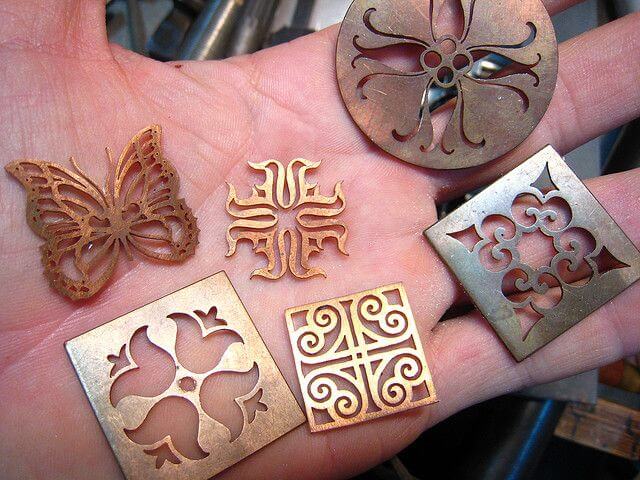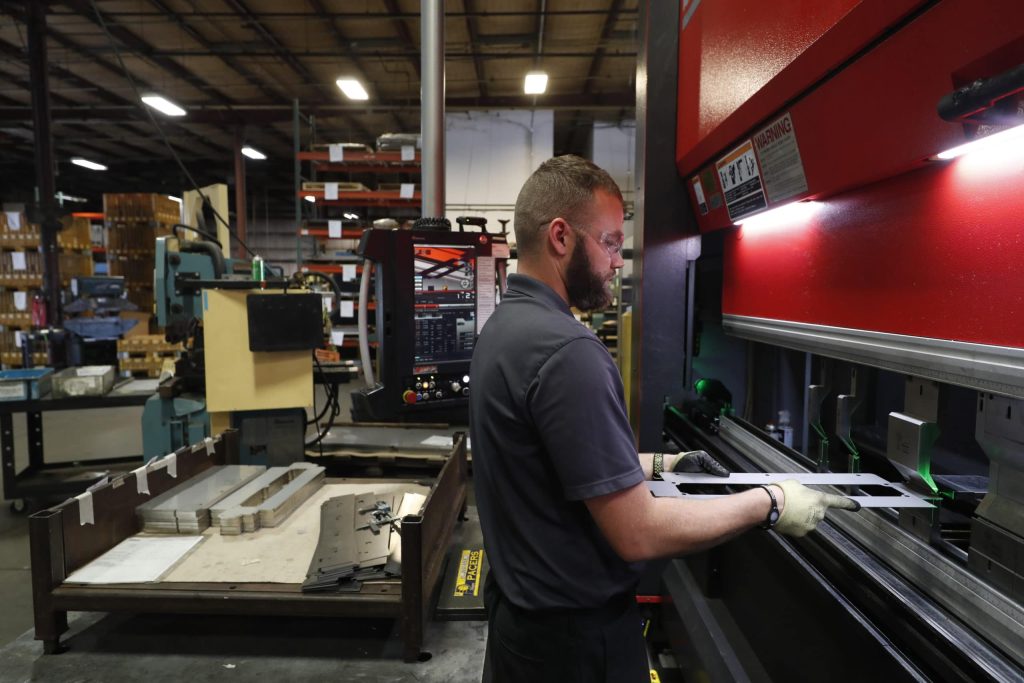Table of Contents
- How to Cut Intricate Designs in Sheet Metal?
- Frequently Asked Questions
- What tools do I need to cut intricate designs in sheet metal?
- What type of sheet metal is best for cutting intricate designs?
- How do I accurately mark out my design on the sheet metal?
- What techniques should I use to cut intricate designs in sheet metal?
- How do I prevent the sheet metal from warping while cutting?
Are you looking to add some intricate designs to your sheet metal project but don’t know where to start? Cutting sheet metal can be a daunting task, especially if you’re looking to create intricate designs. But don’t worry, with the right tools and techniques, you can cut out even the most intricate designs with ease.
In this article, we will explore the best tools and techniques for cutting intricate designs in sheet metal. Whether you’re a seasoned metalworker or just starting, we have tips and tricks that will help you achieve the perfect cut every time. So, let’s get started and turn your sheet metal project into a work of art!
- Step 1: Create a design on paper or a computer program.
- Step 2: Transfer the design onto the sheet metal using a marker or scribe.
- Step 3: Use a high-quality metal cutting tool, such as a jigsaw or plasma cutter, to cut out the design.
- Step 4: Sand the edges of the design to smooth them out.
- Step 5: Apply a protective coating to prevent rusting or damage.
How to Cut Intricate Designs in Sheet Metal?
Sheet metal is a versatile material that can be used for a variety of purposes, including creating intricate designs. However, cutting sheet metal can be challenging, especially when it comes to intricate designs. In this article, we will discuss some tips and techniques on how to cut intricate designs in sheet metal.
Understanding Sheet Metal
Before we get into the techniques of cutting intricate designs in sheet metal, it’s important to understand the material itself. Sheet metal is a thin and flat material that is typically made of steel, aluminum, or other metals. The thickness of sheet metal is measured in gauges, with a lower gauge indicating a thicker sheet.
When cutting sheet metal, it’s essential to use the proper tools and techniques to avoid damaging the material. It’s also important to choose the right type of sheet metal for your project, as different metals have different properties and cutting requirements.
Tools for Cutting Sheet Metal
There are several tools that you can use to cut sheet metal, depending on the complexity of the design and the thickness of the material. Some common tools include:
- Tin snips: These are handheld cutting tools that can be used to cut straight lines and curves.
- Nibblers: These are power tools that can cut intricate shapes with a high level of precision.
- Plasma cutters: These are high-powered tools that use an electric arc to cut through sheet metal.
When choosing a tool for cutting sheet metal, consider the complexity of the design and the thickness of the material.
Techniques for Cutting Intricate Designs
When cutting intricate designs in sheet metal, it’s important to use the right techniques to avoid damaging the material. Some common techniques include:
- Marking the design: Use a marker or a scribe to outline the design on the sheet metal.
- Clamping the metal: Secure the sheet metal to a workbench or table to prevent it from moving while you cut.
- Starting with the outside: Begin cutting the outside of the design first, then work your way inward.
- Using multiple tools: Depending on the complexity of the design, you may need to use multiple tools to cut different parts of the design.
Benefits of Cutting Intricate Designs in Sheet Metal
Cutting intricate designs in sheet metal can offer several benefits, including:
- Customization: Sheet metal can be cut into any shape, making it ideal for creating custom designs.
- Durability: Sheet metal is a strong and durable material that can withstand harsh conditions.
- Aesthetics: Intricate designs in sheet metal can add a unique and visually appealing element to any project.
Sheet Metal vs. Other Materials
When it comes to creating intricate designs, sheet metal offers several advantages over other materials, such as:
| Material | Advantages | Disadvantages |
|---|---|---|
| Wood | Easy to work with, lightweight | Not as strong or durable as metal |
| Plastic | Lightweight, easy to shape | Not as strong or durable as metal |
| Glass | Transparent, visually appealing | Fragile, difficult to work with |
Overall, sheet metal is a versatile and durable material that can be used for a variety of purposes, including creating intricate designs. By using the proper tools and techniques, you can cut sheet metal into any shape or design you desire.
Frequently Asked Questions
Cutting intricate designs in sheet metal can be a challenging task, but with the right techniques and tools, it can be done with precision and ease. Here are some frequently asked questions about how to cut intricate designs in sheet metal.
What tools do I need to cut intricate designs in sheet metal?
There are several tools you will need to cut intricate designs in sheet metal. The first is a metal cutting saw, such as a jigsaw or a band saw. You will also need a set of metal files to smooth out any rough edges or burrs left behind after cutting. Additionally, a metal ruler and a compass or protractor will help you accurately mark out your design before cutting.
For more intricate designs, you may also need a set of metal shears or snips to make smaller cuts or curves. A rotary tool with a cutting disc attachment can also be useful for making intricate cuts or adding details to your design.
What type of sheet metal is best for cutting intricate designs?
When cutting intricate designs in sheet metal, it is important to choose a metal that is thin enough to be easily cut, but thick enough to maintain its shape. Typically, sheet metal between 16-24 gauge is the best choice for cutting intricate designs. However, the specific type of metal you choose will depend on the project you are working on and the look you are trying to achieve.
For example, copper and brass are popular choices for decorative projects due to their beautiful color and texture. Stainless steel and aluminum are often used for more functional projects, such as building HVAC systems or automotive parts.
How do I accurately mark out my design on the sheet metal?
Before cutting your design, it is important to accurately mark it out on the sheet metal. To do this, use a metal ruler and a compass or protractor to create precise lines and angles. You can also use a sharpie or other marker to ensure that your lines are visible and easy to follow.
If you are working with a particularly intricate design, you may want to consider creating a paper template first. This will allow you to make any necessary adjustments to your design before cutting it into the sheet metal.
What techniques should I use to cut intricate designs in sheet metal?
When cutting intricate designs in sheet metal, it is important to use the right techniques to ensure accuracy and precision. One technique is to start by making a rough cut of the design, leaving a bit of extra metal around the edges. You can then use metal files to carefully remove the excess metal and smooth out any rough edges or burrs.
Another technique is to use a metal cutting saw with a fine-toothed blade. This will allow you to make precise cuts without damaging the sheet metal. Additionally, using a slow and steady cutting speed can help you maintain control and accuracy while cutting.
How do I prevent the sheet metal from warping while cutting?
One common issue when cutting intricate designs in sheet metal is warping. This can occur when the metal heats up due to friction from the saw blade or other cutting tools. To prevent warping, it is important to use a cutting fluid or lubricant to keep the saw blade cool and reduce friction.
You can also try using a clamp or vise to hold the sheet metal in place while cutting. This will help prevent it from moving or vibrating, which can also contribute to warping. Additionally, taking breaks between cuts to allow the metal to cool down can help prevent warping.
In conclusion, cutting intricate designs in sheet metal is a challenging task that requires skill and precision. However, with the right tools, techniques, and patience, anyone can master this art.
Firstly, it is essential to choose the right tool for the job. A laser cutter or CNC machine can produce precise cuts, but a jeweler’s saw or metal snips can also work well for smaller projects. It is crucial to have a steady hand and take your time to avoid mistakes.
Secondly, practice makes perfect. Start with simple designs and work your way up to more complex ones. Experiment with different techniques and tools until you find what works best for you. Remember to wear protective gear, such as gloves and eye protection, to avoid injury.
Lastly, don’t be afraid to seek help or inspiration from others. Joining a metalworking community or taking a class can provide valuable insights and feedback. Remember, cutting intricate designs in sheet metal is a rewarding and enjoyable experience that can lead to stunning creations.
Request a quote today!
[contact-form-7 id="1578" title="Contact form"]
Please compress the file into a ZIP or RAR file before uploading. Alternatively, send through your RFQ by email.
enquires@unitymanufacture.com




